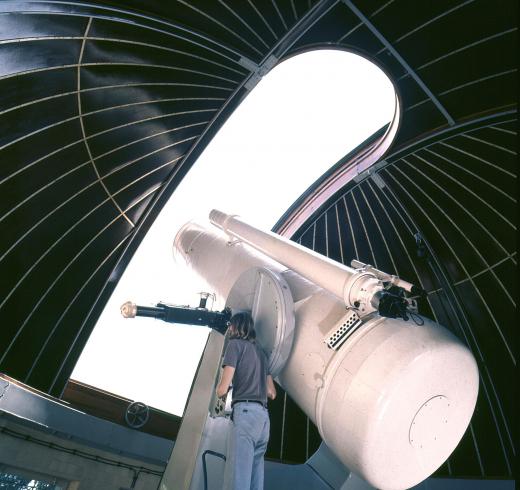What is a Meteor Shower?
 Michael Pollick
Michael Pollick
A meteor shower is an astronomical event in which hundreds or thousands of dust-sized meteoroids enter the Earth's atmosphere and almost immediately burn up, creating a short-lived glowing streak in the night sky. These particles form a lingering trail, called a meteor stream, behind a comet as it passes around the sun. When the Earth passes through this debris field, the result is a meteor shower. Because meteoroids are rarely larger than a grain of sand, they are usually not considered a threat to the planet.
On any given night, observers from Earth can expect to see at least one or two meteors streak across the sky. There are literally dozens of different comet streams that can produce meteoroids as the Earth navigates through them. Most of the time, only a small population in a limited area can enjoy a particularly strong meteor shower. Even regularly scheduled meteor events, such as the Perseids or the Leonids, vary in intensity every year.

A meteor shower is a very popular astronomical event for amateur stargazers, since it requires no special viewing equipment to observe. Local astronomy clubs and meteorologists can usually suggest peak hours and nights for maximum meteor activity. Unfortunately for some observers, these peak times are often very early in the morning. It is not unusual for local observatories to open their facilities for observation.

If you would like to view a meteor shower, plan on leaving the city lights behind you. The light generated by cities is considered pollution by professional astronomers. In order to minimize light pollution, you'll need to drive at least 20 miles (about 32 km) away from any developed city.
Meteors are best viewed on a moonless night with clear skies. Bring warm bedding or a sleeping bag, along with a foldable beach or lounge chair. The hood of a car may also provide enough support to view a meteor shower comfortably.

Once you have found an appropriate viewing point, be prepared to scan the sky constantly. The first hits can be very unexpected and fleeting. Look for sudden streaks of light to appear from a specific point in the sky, usually a constellation such as Perseus or Leo. Astronomers should be able to provide a precise point of origin for meteor activity, although individual streaks can appear from almost anywhere. Continue to scan the sky, and keep an eye on the clock as the peak hour approaches.
Sometimes, a meteor shower can become an even more intense display called a meteor storm. Such events are rare, but astronomers are often able to calculate the relative strength or weakness of an upcoming shower. Whenever a comet loses a significant amount of material during a pass around the sun, the resulting meteoroid stream can be especially dense. Whenever the Earth passes through such a debris field, a shower can quickly become a meteor storm.
AS FEATURED ON:
AS FEATURED ON:













Discussion Comments
@Albona - The ancient Mayans are believed to have had fairly accurate theories about stars, our solar system, and even the shape of the earth. Though their understanding was undoubtedly primitive in comparison to modern astronomical facts, the ancient Mayans, through the limited evidence they've left for us, seem to have had a shockingly accurate understanding of earth's movement in relation to the sun.
Similar evidence of advanced astronomical thought has been found in a number of ancient civilizations, in particular the ancient Egyptians. I think you would be shocked at how prophetic some societies were in attempting to interpret the stars. I am sure that other pre-astronomy societies however, have come up with some pretty ridiculous explanations for the shooting star phenomenon.
Has anyone ever wondered how people explained meteor showers before modern conceptions of space and general astronomy existed? I'm sure every society had its own fantastical explanation of what meteor showers and shooting stars were. Anyone know anything about any pre-astronomy theories of stars?
Post your comments